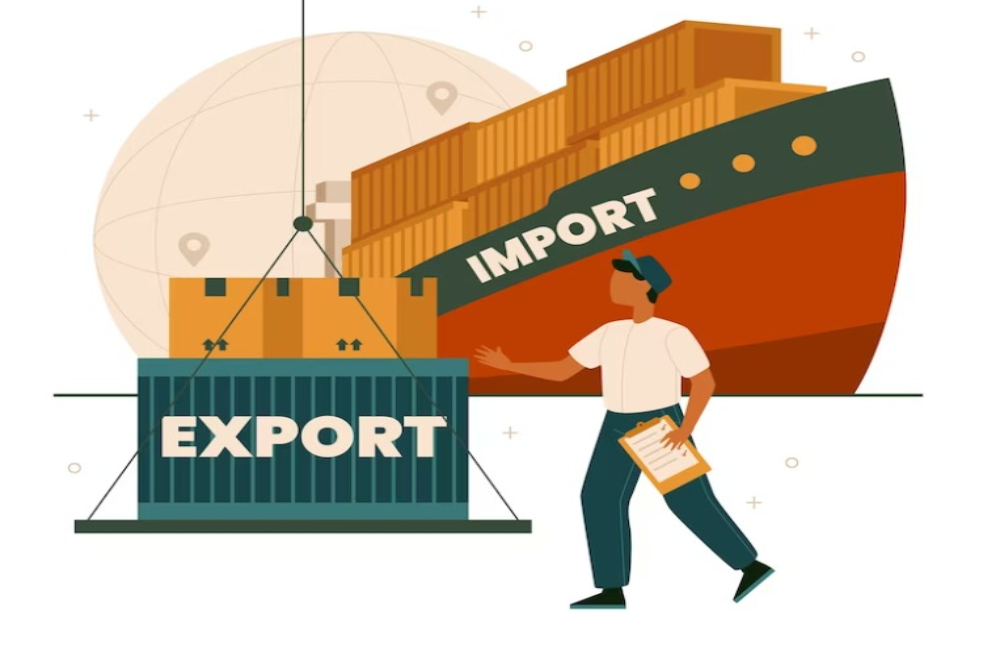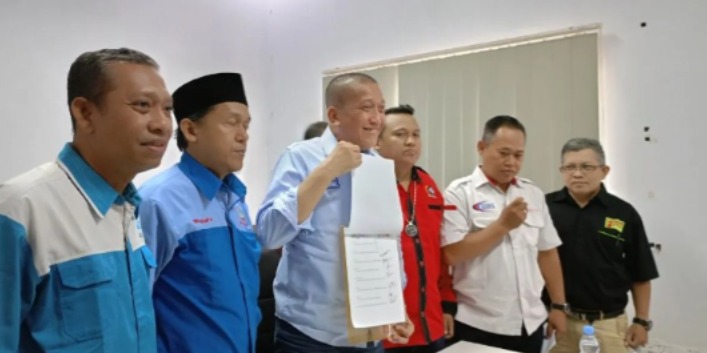Trump Imposes 32% Tariff, Apindo DIY and Asmindo Target New Markets
Friday, 04 April 2025
JOGJA – The Indonesian Employers Association (Apindo) of the Yogyakarta Special Region (DIY) and the Indonesian Furniture and Handicraft Industry Association (Asmindo) are aiming to tap into new markets to mitigate the impact of the United States' new import tariff policy of 32% imposed by President Donald Trump.
Timotius Apriyanto, Deputy Chairman of Apindo DIY, stated that the government must immediately take strategic steps to cushion the impact. These include diversifying export markets to other countries to reduce dependency on the U.S., providing incentives for domestic industries to improve the competitiveness of local products, engaging in bilateral negotiations with the U.S. government to find fairer trade solutions, market interventions by Bank Indonesia (BI) to stabilize the rupiah exchange rate, and implementing tighter fiscal policies to reduce macroeconomic uncertainty.
“There must be diplomatic lobbying to ease the impact. If the 32% tariff must be implemented, it should be applied gradually,” he said on Friday (April 4, 2025).
He further explained that in the context of DIY, the Regional Industry and Trade Office (Disperindag) should immediately identify the sectors that are likely to be affected in the near future, including detailed timelines regarding when the 32% tariff will be applied or whether it can be implemented in phases.
“The affected sectors include textile products—both knitted and non-knitted—furniture and crafts, footwear products, leather goods, gloves, and others,” he explained.
According to him, if orders from the U.S. become uncompetitive while exporters are unprepared, this could lead to deindustrialization and a decline in demand. At the very least, the implementation of this policy needs to be observed over a one-month period.
From a labor perspective, he warned that the situation could escalate to a wave of layoffs (PHK). Other potential impacts include an economic slowdown. In such circumstances, the government must prioritize social and economic mitigation strategies.
“We must diversify both markets and commodities. For example, fisheries and agriculture are currently seeing a rising demand trend,” he added.
He mentioned that potential markets beyond the U.S. include the United Arab Emirates (UAE), African countries, and Eastern Europe. He emphasized that opening new markets requires dialogue with exporters, although the government is currently focusing on cost-efficiency measures.
“DIY must immediately convene with exporters to identify the impacts and discuss international trade mitigation strategies,” he continued.
He explained that the Trump Risk Index includes three categories: trade balance, security issues, and immigration issues. In Indonesia’s case, the trade surplus with the U.S. is the primary factor. Timotius stated that Trump refers to the policy as a “reciprocal tariff,” implying a retaliatory measure against countries on the list, including Indonesia.
Susilo, Secretary of Asmindo DIY, stated that the imposition of the 32% tariff would significantly reduce the purchasing power for furniture and handicrafts in the U.S. However, he acknowledged that this situation must be faced and hoped it would not last long.
Seeking markets outside the U.S. is one of the alternatives, he added.
He identified the Middle East as a promising region and emphasized that this should be the responsibility of the Indonesian Trade Promotion Center (ITPC) to intensify promotion efforts outside of the U.S. market.
“As business players, penetrating foreign markets without the support of ITPC and other institutions will be difficult,” he stated.
Previously, the Yogyakarta Statistics Agency (BPS DIY) reported that DIY’s exports in January 2025 reached USD 43.41 million, a month-to-month (mtm) decline of 26.86% from the previous month's USD 59.35 million. On a year-on-year (yoy) basis, however, exports increased by 8.04% from USD 40.18 million in January 2024.
Herum Fajarwati, Head of BPS DIY, stated that the top export destination for DIY remained the United States, with a value of USD 17.45 million, accounting for 40.20% of total exports, followed by Germany (USD 4.82 million or 11.10%), and Japan (USD 3.58 million or 8.25%). Other destinations included Australia, Spain, the Netherlands, South Korea, the United Kingdom, Vietnam, and Singapore.
She noted that, by region, the highest export share in January 2025 was to the U.S. (40.20%), followed by the European Union (28.80%), and ASEAN countries (3.46%).
In terms of commodity groups, the highest export value was non-knitted apparel at USD 16.34 million (37.64%), followed by household furniture/lighting at USD 5.21 million (12%), and leather goods at USD 4.82 million (11.10%).
“The top three export commodities in January 2025 were non-knitted apparel (37.64%), household furniture/lighting (12%), and leather goods (11.10%),” said Herum.
Source: ekbis.harianjogja.com








